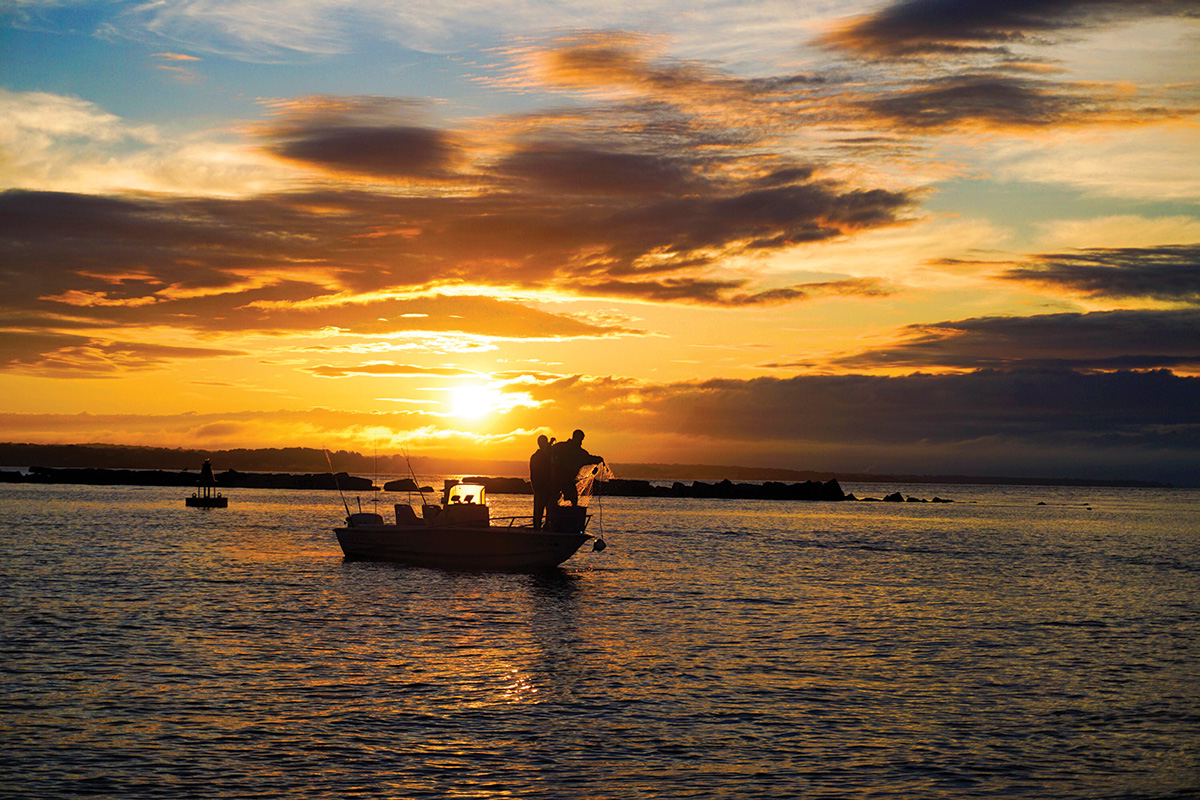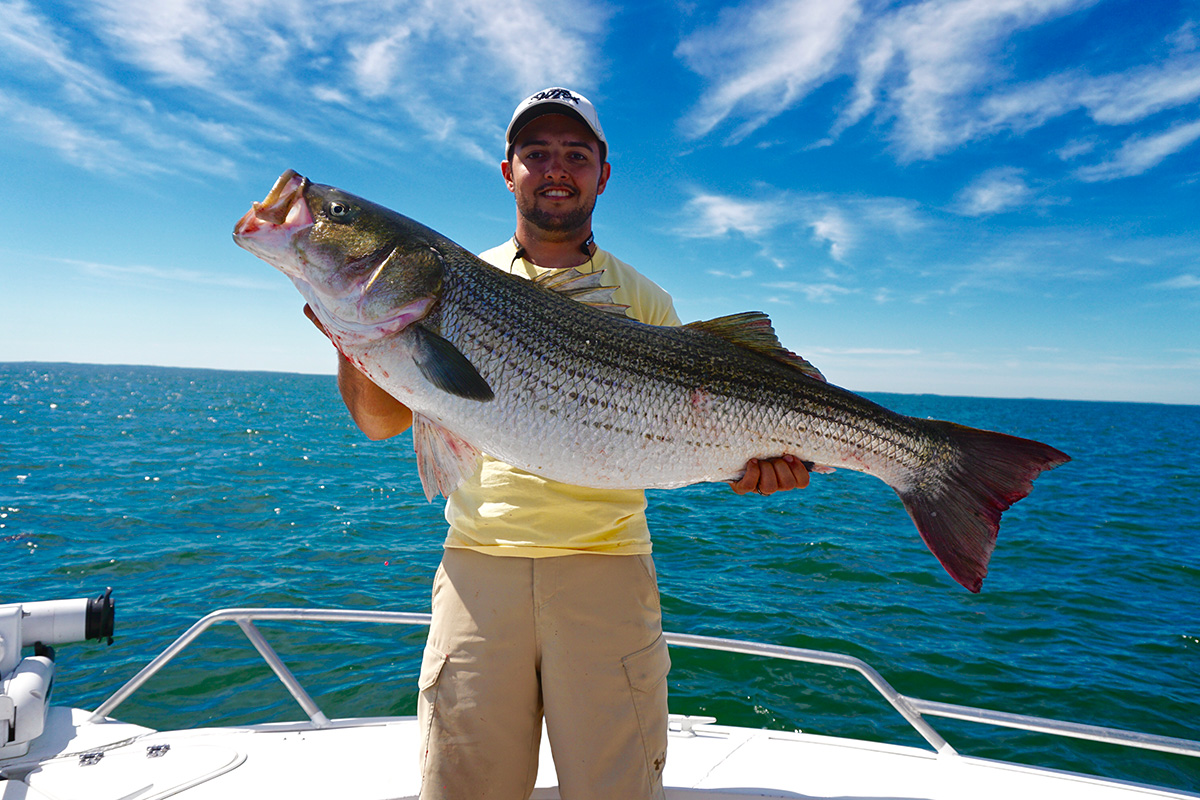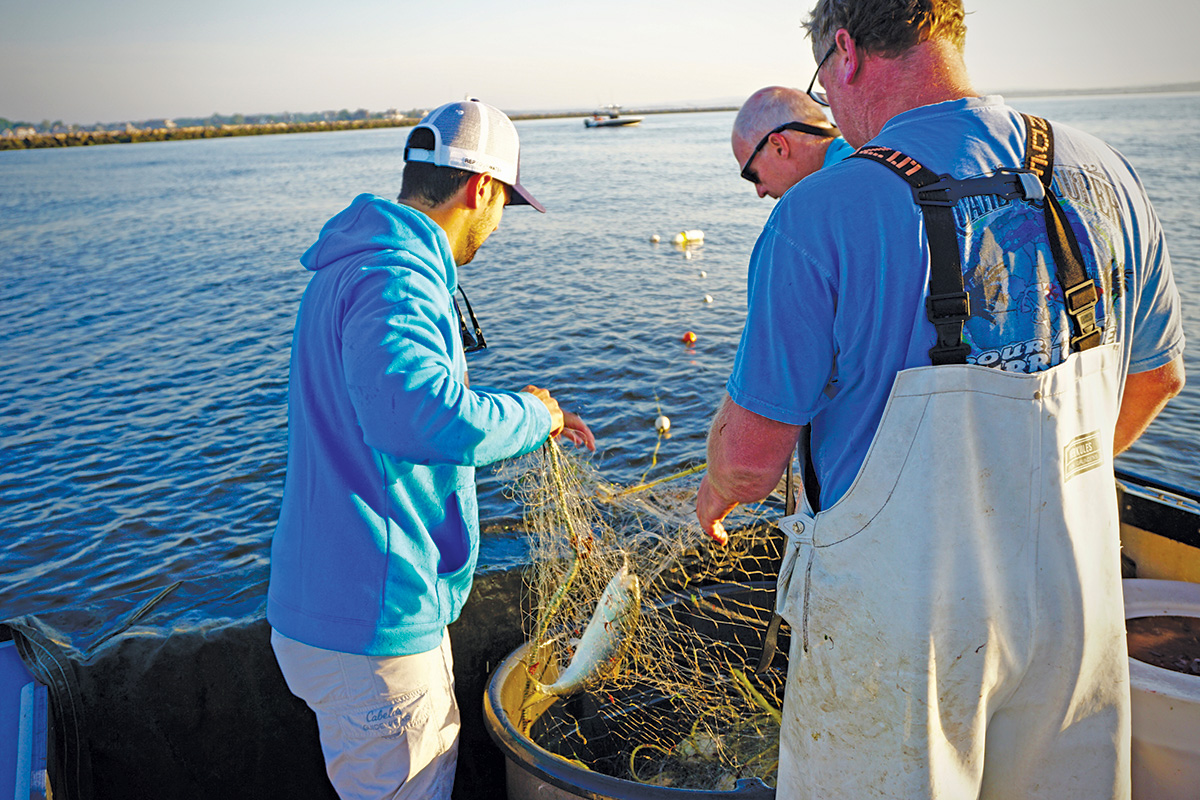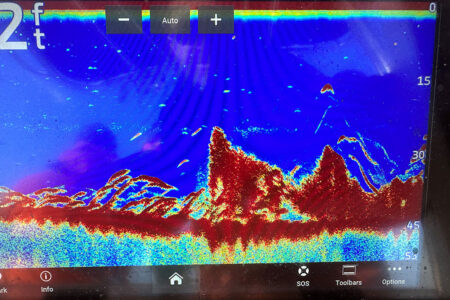
When it comes to choosing the most productive bait for trophy-class striped bass, the choice is simple: give them the real thing.
Atlantic menhaden are the staple of a striper’s diet and putting one on the end of your line could yield you the fish of a lifetime! In recent years menhaden—also referred to as bunker, pogies, mossbacks, etc.—have experienced a resurgence in the waters of the northeast.
Throughout the spring I try various types of topwater plugs, soft plastics and jigs to lure a striper onto my hook, but once the large schools of bunker make their way into my waters, my focus immediately turns to them.
Finding the Bait
Some mornings finding these striper snacks can be as easy as spotting large schools of fish splashing right at your marina or boat launch. It is important to pay close attention to the surface as this is the quickest and easiest way to find bait. Other days, when bunker are lower in the water column, the search can be difficult. In a recent conversation with Captain Donald Champion of the charter boat “Widgeon,” I asked what tools he uses to find bait consistently. Donald says that he keeps an eye on the weather when deciding where he is going to find bait. He told me, “Seasons with a lot of rain push the bait out toward the mouth of rivers, and drier years will have bunker moving further up rivers and into coves.”
Electronics are another useful tool in finding schools of bunker when they aren’t visible on the surface. Side scan sonars help you quickly scan large areas for bunker. These sonars pinpoint the bait without getting too close and spooking the school. This is important because once you have located bunker it is easy to scare them. In this situation, you will be chasing schools and likely have little success catching any bait. Once a school is located it is important to put your boat in neutral or even kill the motor completely while you get close enough to catch your bunker. In order to be successful, you must watch the wind and the tide to see how your boat approaches the school. Slowly making your way around the edges of the bait rather than going directly to the middle of them prevents pushing the school around. Once you have found the bait and planned out your approach, choose a method for catching some bunker.
Snagging
Snagging bunker is the easiest and one of the most popular methods to a plentiful catch. This method uses a weighted treble hook to snag bunker right out of the water. These hooks are readily available at most tackle shops and can also be made at home fairly easily for those anglers who pour their own lead. Once a school of bunker is located, you cast your snagging hook past the school and quickly pull it through the bait. While retrieving your hook, reel quickly and give long, swift sweeps of your rod parallel to the water surface. Most often you will hook the bunker on the sweeping motion of the retrieve. Once a bunker is hooked, quickly get them in the boat and into a livewell.
Just like any method, snagging has its drawbacks. Bunker are fairly delicate and when hooked, often die much quicker than when being caught in a net. Another issue anglers may face when snagging bunker is “bumping” the bait but not actually hooking them. Snagging hooks dull easily and without a sharp edge this is a problem you will run into quite often. It is important to carry extra snagging hooks as well as hook sharpeners when catching your own bait using this method.

Cast Net
Using a cast net to get bunker is a successful method of catching bait, but it is a difficult one to master. This method uses a weighted circular net that when thrown properly, opens up and sinks over a school of unsuspecting bait. The net is then pulled closed and hauled into the boat.
Throwing a cast net takes plenty of practice and is often frustrating for the beginner. This method is best used when schools of bait are thick, and one cast of the net can yield enough bait for your entire fishing trip. Many anglers who use this approach often wear bibs and boots for protection because swinging the net in and out of the water will get both you and your boat wet and dirty. Even with these drawbacks, when mastered, it is one of the quickest and most effective methods of catching bunker. The bunker stay alive longer than being snagged with a hook, and any fish caught in a cast net that can’t be used as bait can be released safely.
Gill Net
One of the more popular and probably the most successful method of catching large numbers of bunker is with the use of a gill net. A gill net is a net of various lengths that has a lead-weighted bottom and round buoys that keep the top afloat. The net acts as a floating barrier in the water that catches anything that passes through it. A cast net is great for casting over thick schools of bait, but when the bait is sparser a gill net is by far the most effective way to catch menhaden.
A gill net is a large piece of equipment, and depending on your state’s regulations, nets can be 25 to over 200 feet long. A gill net requires some practice letting it out of the boat and minding the current to know which way your net is going to swing. As stated earlier, a gill net will catch anything in its path. This includes crabs, stripers and any other fish that may be in the area. It is important to know your state’s regulations regarding what you can use for bait and which needs to be released safely back into the water. Further, some states require a special gill net license so be sure consult your local regulations before using this method of gathering bait. However, once mastered, one pass with a gill net will have you ready for a full day of fishing.
Keeping Bunker Alive
Keeping bunker alive long enough to get to your favorite fishing spots can be a tough task. These fish need proper oxygen levels and require very good water quality. When snagged, bunker tend to bleed and bloody the water in the livewell. This poor water quality causes bunker to die very quickly. A livewell is needed that exchanges water frequently, keeping oxygen levels high and the quality of the water fresh. Putting fish into a square or rectangular livewell will also cause your bait to stop swimming and bury their snouts into the corners of the tank and ultimately die. A round bait tank is needed so the bait can continuously swim and stay alive for longer periods of time.

Fishing Bunker
Okay, now on to the fun part! There are many methods of fishing with live bunker, and most of the time it comes down to personal preference. One of the first things I suggest to people when they ask where to fish is, “fish where the bait is.” Sometimes a long trip is not necessary to find fish. If you have found large schools of bait, chances are good that there are predatory fish in the area chasing them around as well. Other places to look when trying to land a trophy-size striper are wrecks, rock piles, changes in the topography of the ocean floor and reefs. This type of structure holds fish and is often very productive when fishing for stripers.
Once you have decided where to fish it’s time to rig up your bunker. Bunker is most commonly fished on a three-way rig. A three-way rig is comprised of a three-way swivel with one line holding the bait, one with a weight and the last connecting to your main line back to your reel. When practicing catch and release a single circle hook works great. Other anglers who are looking to keep and eat their catch may choose to use a treble hook.
There is also a choice to be made when deciding where to hook your menhaden.
My personal preference is through the snout but other options include through the back by the dorsal fin and also through the mouth. I suggest playing with the different options until you find a method that you have the most confidence in and that proves successful for you.
There are few things in the fishing world more rewarding than catching a trophy striper using bunker that you caught yourself. So get out there, find some bunker, and FISH ON!




